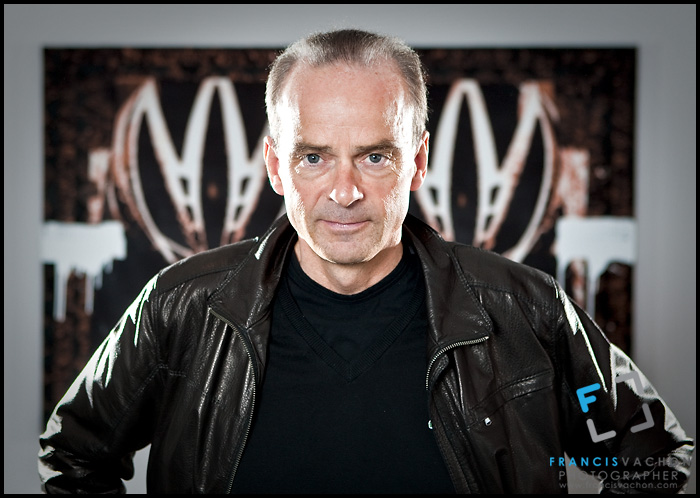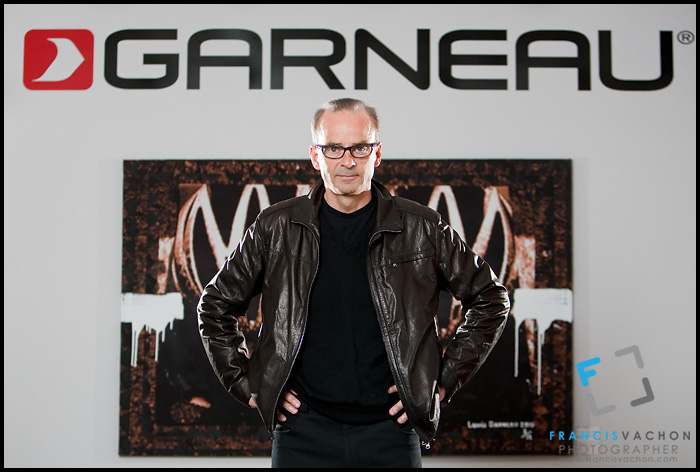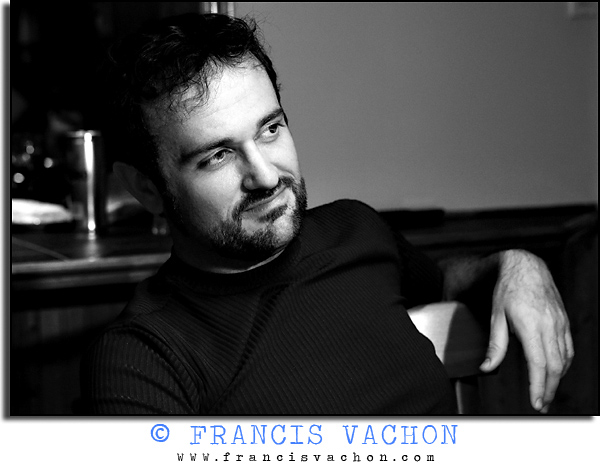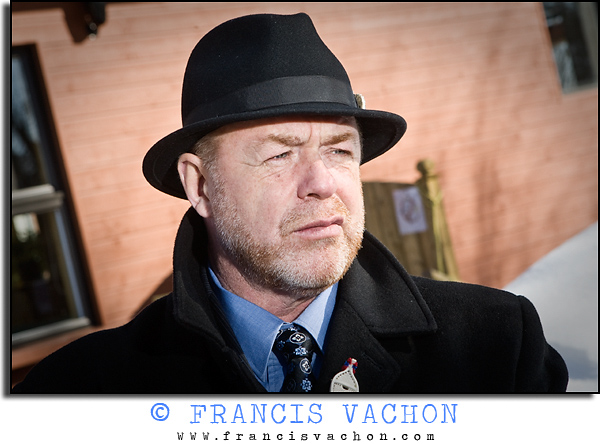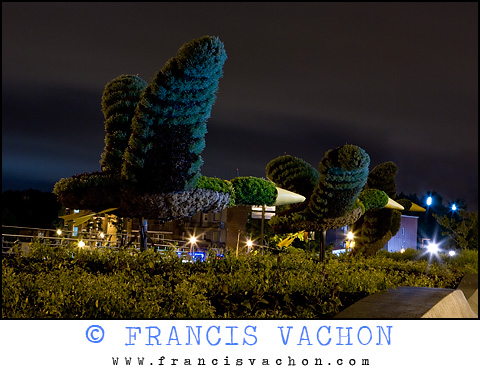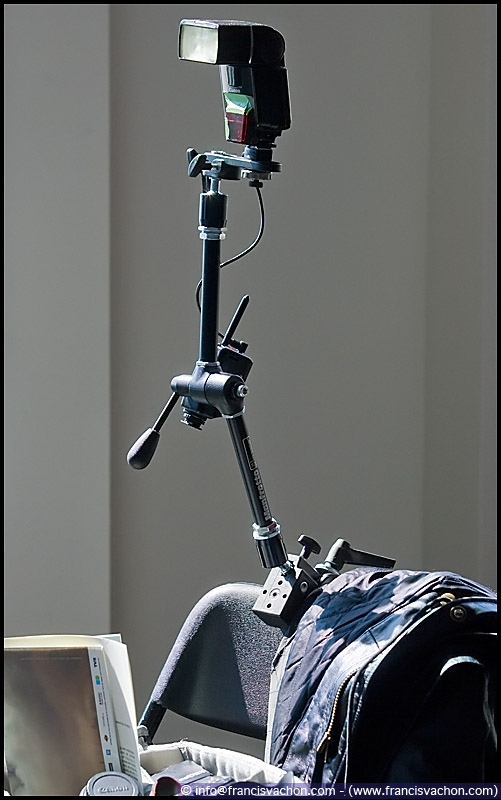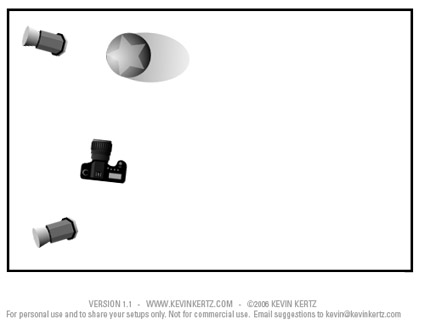Louis Garneau, CEO of Louis Garneau Sports, poses at the company headquarters in Saint-Augustin-de-Desmaures Thursday March 31, 2011.
(More stock photos of Louis Garneau Sport)
L’arrière-scène:
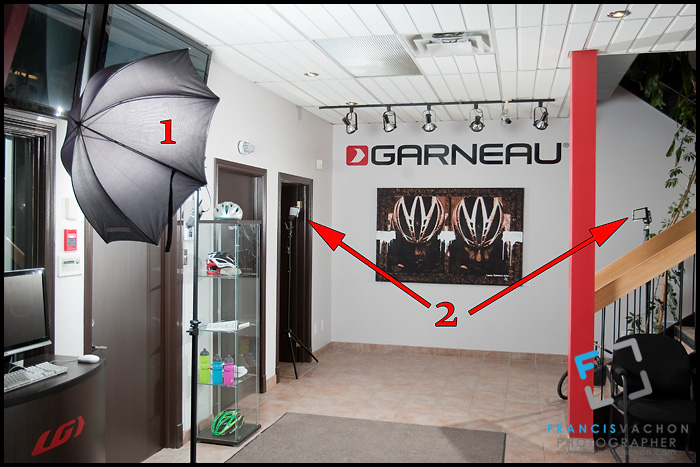
Pratiquement chaque portrait que j’exécute est complètement improvisé. Un journal ou une revue me demande d’aller photographier une personne à son bureau ou son domicile et je n’ai aucune idée de ce que je vais y trouver. En arrivant sur place, en plus de faire connaissance avec mon sujet et le mettre en confiance, je dois rapidement trouver le concept que je vais réaliser.
Chez Louis Garneau Sport, c’est une peinture réalisée par monsieur Garneau lui-même qui a attiré mon attention. Et oui: Ancien cycliste de renommé mondiale, homme d’affaire doué, ET peintre accompli.
J’ai donc installé un flash en arrière de moi, légèrement sur ma gauche, en le faisant « bouncer » (rebondir) dans une ombrelle (1). J’ai placé monsieur Garneau à la lisière du tapis, et j’ai installé deux autres flashes (2) en lumière directe à l’arrière de lui, visant son visage. C’est ce qui a créé les 2 « strips » sur chacune de ses joues ainsi que la « lumière de séparation » le long de ses bras et épaules. J’ai utilisé sur chacun de ses flashes un Honl Speed Gobo comme porte de grange pour ne pas que la lumière se contamine ailleur ou créé un « flare » sur ma lentille.
Installation, test de lumière et séance de photo: 15 ou 20 minutes et c’est terminé; le très occupé PDG de Louis Garneau Sport peut retourner gérer sa compagnie.
